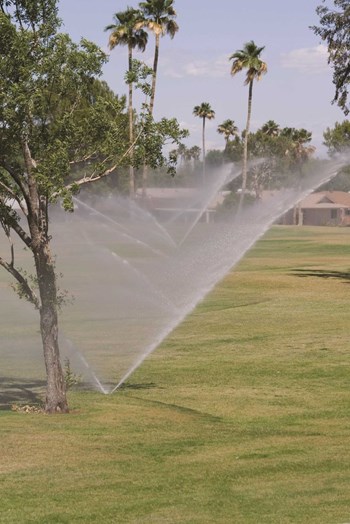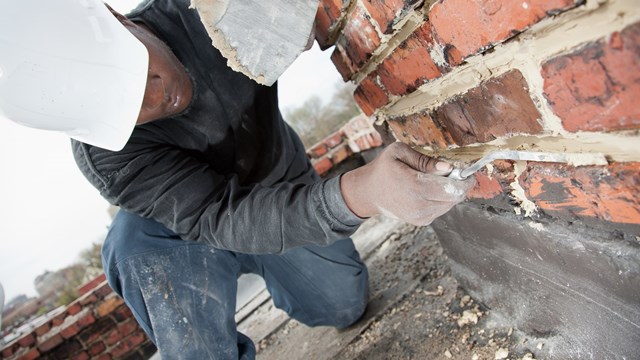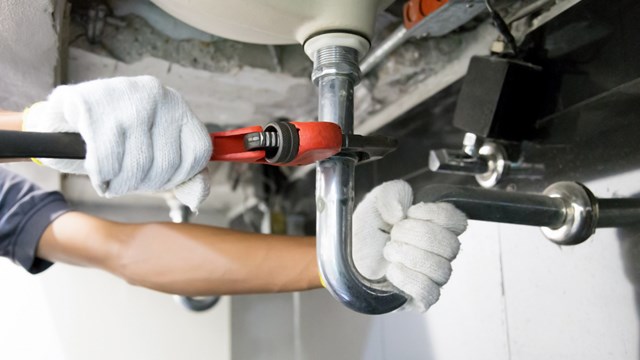
Stretching south from Orlando, the Everglades are vital to sustaining Florida’s sensitive ecosystem. To this end, proper water management is critical to maintaining equilibrium for residents, vegetation and wildlife. In a climate like southern Florida's, well-planned and managed water management and drainage systems are essential. Neglecting this can have devastating result from—flooding to mold to costly residential and commercial real estate damage.
While water management is a tiered system operating on many levels with various oversight, it is true that water seeks its own level and thus what occurs in one tier or segment of the management process impacts all tiers.
Three Key Issues
“We deal with the primary system. For example, we’re like I-95, the counties and municipalities are like the secondary roads, and the HOAs are like the tertiary roads,” says Susan Sylvester, the chief of the Water Control Operations Bureau at the South Florida Water Management District. “The flow of traffic is the same as with water management. We operate a system that was built to operate flood control and that is our primary goal but along with that we deal with water supply which is so very important due to the Everglades and the environment.”
Mark Clark is a Wetlands and Water Quality Soil and Water Sciences specialist and an associate professor at University of Florida. He explains that there are three key issues related to water management: water supply, water quality and flooding (eventually related to sea level rise associated with climate change). While HOA’s are “tertiary,” boards have the ability to affect meaningful change.
“Water management relates to the demand for water from a finite water supply available to South Florida,” says Clark. “HOAs often control landscaping and irrigation expectations in the common areas of a community and influence the landscaping and irrigation expectations of homeowners within the community. Since 40 to 60 percent of the water used in residential areas is used for outdoor purposes, HOAs can have a strong effect on the water supply issue.”
The second issue, he notes, is equally important as it relates to water quality. “As storm-water runs off the landscape or infiltrates into the ground water, contaminants associated with fertilizers, pesticides, heavy metals and hydrocarbons can runoff the landscape and roads entering storm-water infrastructure and eventually the environment,” says Clark.
“Regulations associated with impaired waters and nutrient criteria are increasing the focus on sources of contaminants and treatment processes in an effort to minimize or eliminate the source of these chemicals since it can be challenging to remove the contaminants once they enter into the storm-water system and environment,” he continues. “Management of storm-water infrastructure to maximize efficiency as well as enhance contaminant removal processes is often within the purview and responsibility of HOA’s.”
Jane Tolbert, Ph.D., senior information specialist for the Florida-Friendly Landscaping Program, Environmental Horticulture Department Institute of Food and Agricultural Sciences, University of Florida, says her organization “deals with sustainable landscaping practices that reduce nutrients and runoff from polluting waterways.” When dealing with “drainage,” which typically refers to the removal of free water (flooded or saturated soil conditions) from the landscape, it is important to have best practices in place. To further a board’s knowledge on this all-important issue, she points to the 2008 report “Florida Friendly Best Management Practices for Protection of Water Resources produced,” by the Green Industries.
“Non-point source pollution comes from diffuse sources and is associated with the long-term effects of everyday activities. It is carried primarily by rainfall and irrigation water, which cause pollutants that have accumulated on the land surface to run off into surface waters or to leach into ground water,” the report notes. “Water is the primary mechanism for the transport of dissolved chemicals through the soil. Non-point source pollution may not be obvious until a rainfall event occurs, leading to storm-water runoff from roads, parking lots, suburban areas, and farms. As Florida’s population has soared, this type of pollution has become an increasingly important issue in the state.”
Clark’s third issue, climate change and rising sea levels, might be on the distant horizon, but with sea levels already rising higher in certain regions, the location of an HOA can impact reaction time. “Depending on where a particular development is in proximity to the coastline and at what elevation the community sites above sea level, drainage of floodwater to the tide will become increasingly difficult,” says Clark. “Water Management District infrastructure will need to be upgraded to deal with this over time, likely resulting in pumping water and not just relying on gravity to lower water levels in canals so that HOA storm-water infrastructure can drain to the canals,” says Clark.
Oversight
In order for a development to discharge storm-water into public water resources, a water permit is required which is usually applied for by a developer, HOA or a Community Development Districts (CDD). This permit has requirements for maintenance which is typically an obligation passed on to the HOA. Once the design criteria are met, a permit is granted which mainly focuses on quantity issues associated with storm-water management; however, there is a new Statewide Storm-water Permit program currently being developed which will increase the focus on water quality issues. Guidance on this issue, and others, can be found at the Florida Storm-water Association.
Whether an HOA subcontracts the handling of water management issues to a CDD or not, industry experts said board members should be familiar with the following terms and definitions:
Runoff: referring to water that flows freely over the land surface.
Storm-water: referring to runoff directly associated with a storm event.
Storm water basin: a digressional area created to receive storm-water quickly during a rain event to prevent flooding around critical infrastructure (e.g., streets, homes, etc.). The basin either slowly releases that water to the environment via mainly surface discharge (i.e., a detention basin) or via infiltration and evapotranspiration (i.e., a retention basin). “Basins can be dry basins which should not have any standing water in the basin within several days of the storm event or wet basins which typically have standing water for an extended period like a pond or lake,” notes Clark.
Impervious surface: a surface that does not allow any water to infiltrate into the ground, almost all of the water runs off (e.g., roofs, sidewalks, roadways, highly compacted or clay soils, etc.).
Pervious Surface: a surface that allows at least some of the water to infiltrate into the ground (e.g., uncompacted turf, natural areas, pervious pavers or pavement, etc.).
Interception: rainfall that hits vegetation or structures that does not reach the ground, but instead can evaporate back to the atmosphere.
The Process Itself
Once an entity (developer, HOA or CDD) is selected, it takes on the responsibility to maintain the infrastructure so that flood control and treatment aspects of the original design continue to function. When a CDD is selected as the lead, for example, it is normally staffed with an engineer and collectively complements the responsibilities of the HOA. While operating amenities and ensuring that deed restrictions and other quality standards are enforced remain the responsibility of the HOA, the CDD can handle the maintenance functions previously performed by an association.
“A civil engineer working for a home owners association, city or county are looking at water as it relates to storm drains whereas for us, we look at the bigger picture,” says Sylvester. “We provide drainage and in that sense the ground water and surface water are very tightly linked,” she continues. “Whereas it historically used to be about draining the Everglades, it’s not about that anymore. Today, it’s about providing for the seven million people who live here while not draining the Everglades.”
Even with a permit in place, the state assumes that the infrastructure is being maintained and operational according to the permit requirements; however, problems can arise. For example, if there were problems related to flooding or water quality issues that were the result of negligence, the HOA or CDD would be liable for damages and to fix the problem.
Clark explains that the biggest anthropogenic consequence of poor water management is flooding. “If the infrastructure designed to drain the landscape during a storm is compromised in some way then the design criteria that were permitted will not be met and therefore the consequence may be damage to property,” he says. “From an environmental standpoint, even with an operational permitted storm-water management system, changes in the hydro-logic characteristics of an area such as too much, too little depth, duration, frequency or the timing of flooding can have impacts, but the broader reaching implications typically have to do with changes in water quality.” He adds that most quality issues are best addressed using better source controls to prevent the contaminants from entering the environment in the first place.
Properly maintaining a drainage system by and large is achieved by ensuring the infrastructure is operational which can be handled by an experienced visual inspection on a regular basis and after any significant storm event to make sure the system has not been compromised and that structure is clear of debris. “Visual inspections can be conducted by homeowners, landscape maintenance personnel or property managers,” says Clark. “This visual inspection is mainly to make sure that it is structurally sound with no sign of damage or erosion. If it is fouled with debris or overgrown than landscape maintenance organization can clear the material. If the structure appears to be damaged or there is erosion in the area that might compromise the structure than it should be inspected by an engineer.”
Money and Maintenance
While determining a budget for maintenance is subjective to each HOA, the majority of storm-water permits require a regular inspection by an engineer to certify that the permitted system is in good working order and operational. This requires a HOA, for example, to hire an engineer, and should he or she find issues, funds in place to address problems.
“On our level, we continual do maintenance during the dry season. We try and keep this system, which is now over 60 years old, in top shape,” says Sylvester. “We are trying to avoid poor water management and every homeowner can do their part; for example, by xeriscaping which is landscaping with plants that take the minimum amount of water and more importantly, the minimum amount of nutrients because we receive all the runoff from all over and that runs off to the Everglades which is not healthy.”
W.B. King is a freelance writer and frequent contributor to The South Florida Cooperator.






Leave a Comment